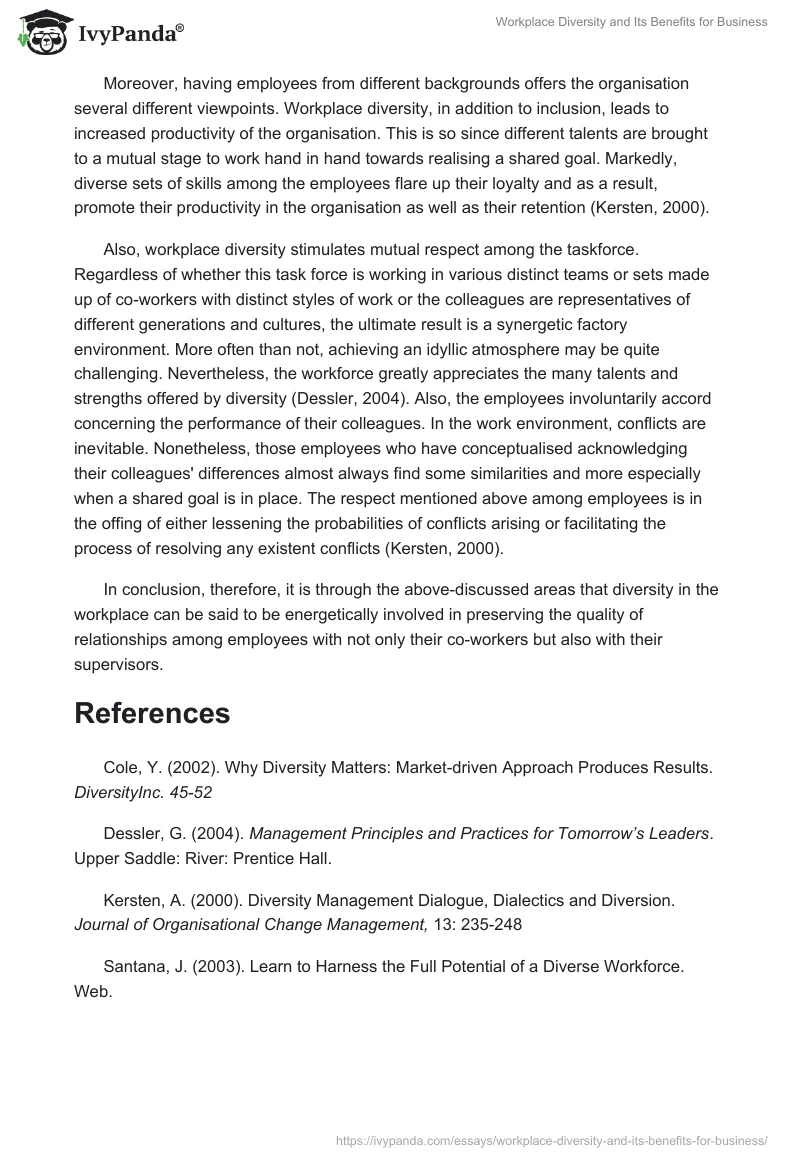Across the globe, and with the invention and persistent technological advancements, diversity in the workplace has become inevitable. It has become part and parcel of global expansion. In every organisation, there is a high likelihood that employees may be originating from different parts of the country or even the world and diverse walks of life. These employees may also be of different creeds, races, ethnicity, sex and disability. It is, therefore, on the prepositions mentioned above, that it can be argued that workplace diversity is no longer a luxury, but a necessity (Cole, 2002).
In the present worldwide economy, different individuals from different corners of the globe are finding themselves working in the same office environment with a shared objective, be it in the short-term or the long-term. However, since every organisational culture owes its authentic business practices, morals and beliefs, it is of great significance for every employee to comprehensively learn how best to work with others in seeing through the accomplishment of the shared mission of the organisation (Dessler, 2004). It is also notable that effective communication ought to be embraced within the modern workplace environment to have all backgrounds and cultures accommodated. It is through the unending interaction with one another that the employees get to learn the required effective communication skills. Besides becoming more tolerant of one another, the aspect of sharing cultural traditions, alternative problem-solving approaches and ideas among employees also play a central role in making these employees forgo their stereotypical notions (Santana, 2003).
There are numerous ways through which business entities reap benefits for embracing workforce that is varied in any of the earlier mentioned tenets. Firstly, workplace diversity plays the role of strengthening the organisation. This is so realised since this diversity brings onboard individuals with different skills, experiences and expertise (Cole, 2002). Undeniably, every person handles situations and circumstances confronting him or her differently. This aspect, therefore, remains to be a vital asset to any organisation, irrespective of the line of operation the organisation is engaged in.
Moreover, having employees from different backgrounds offers the organisation several different viewpoints. Workplace diversity, in addition to inclusion, leads to increased productivity of the organisation. This is so since different talents are brought to a mutual stage to work hand in hand towards realising a shared goal. Markedly, diverse sets of skills among the employees flare up their loyalty and as a result, promote their productivity in the organisation as well as their retention (Kersten, 2000).
Also, workplace diversity stimulates mutual respect among the taskforce. Regardless of whether this task force is working in various distinct teams or sets made up of co-workers with distinct styles of work or the colleagues are representatives of different generations and cultures, the ultimate result is a synergetic factory environment. More often than not, achieving an idyllic atmosphere may be quite challenging. Nevertheless, the workforce greatly appreciates the many talents and strengths offered by diversity (Dessler, 2004). Also, the employees involuntarily accord concerning the performance of their colleagues. In the work environment, conflicts are inevitable. Nonetheless, those employees who have conceptualised acknowledging their colleagues’ differences almost always find some similarities and more especially when a shared goal is in place. The respect mentioned above among employees is in the offing of either lessening the probabilities of conflicts arising or facilitating the process of resolving any existent conflicts (Kersten, 2000).
In conclusion, therefore, it is through the above-discussed areas that diversity in the workplace can be said to be energetically involved in preserving the quality of relationships among employees with not only their co-workers but also with their supervisors.
References
Cole, Y. (2002). Why Diversity Matters: Market-driven Approach Produces Results. DiversityInc. 45-52
Dessler, G. (2004). Management Principles and Practices for Tomorrow’s Leaders. Upper Saddle: River: Prentice Hall.
Kersten, A. (2000). Diversity Management Dialogue, Dialectics and Diversion. Journal of Organisational Change Management, 13: 235-248
Santana, J. (2003). Learn to Harness the Full Potential of a Diverse Workforce. Web.


